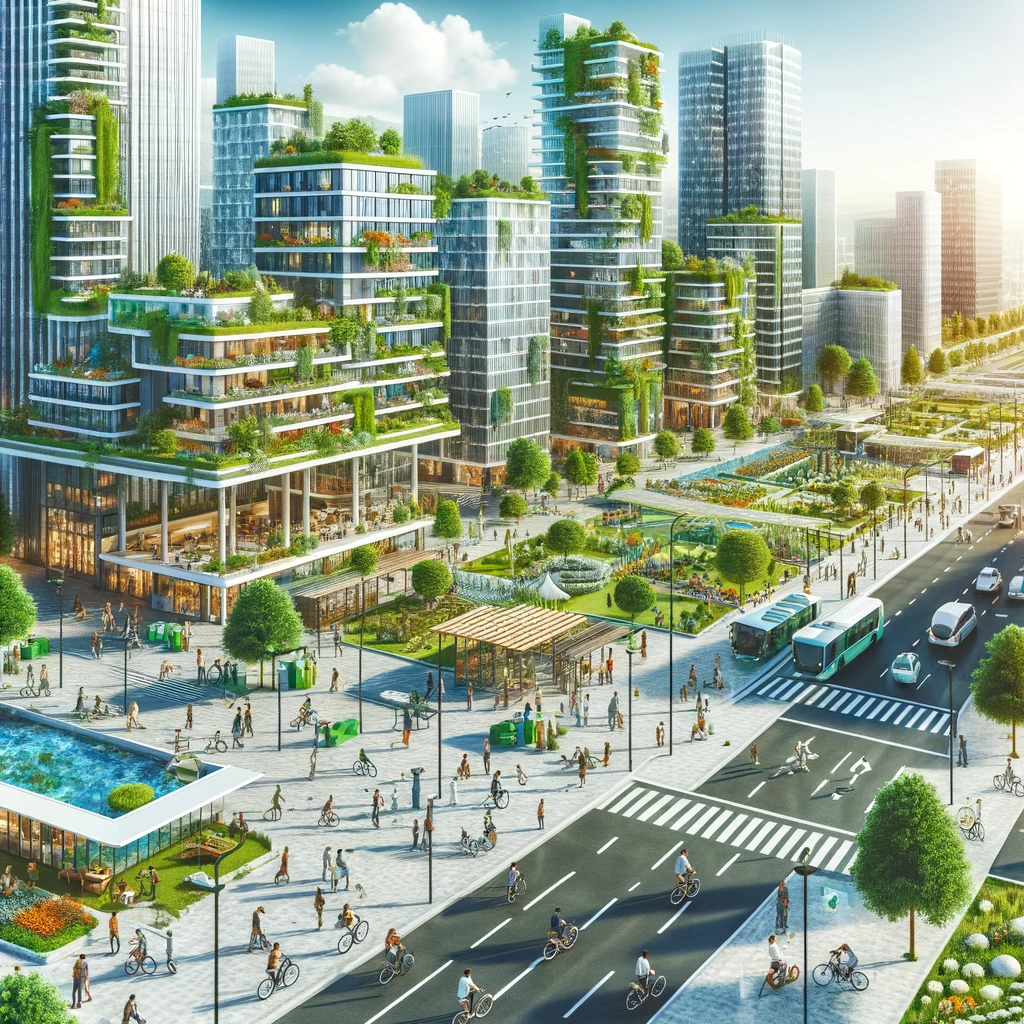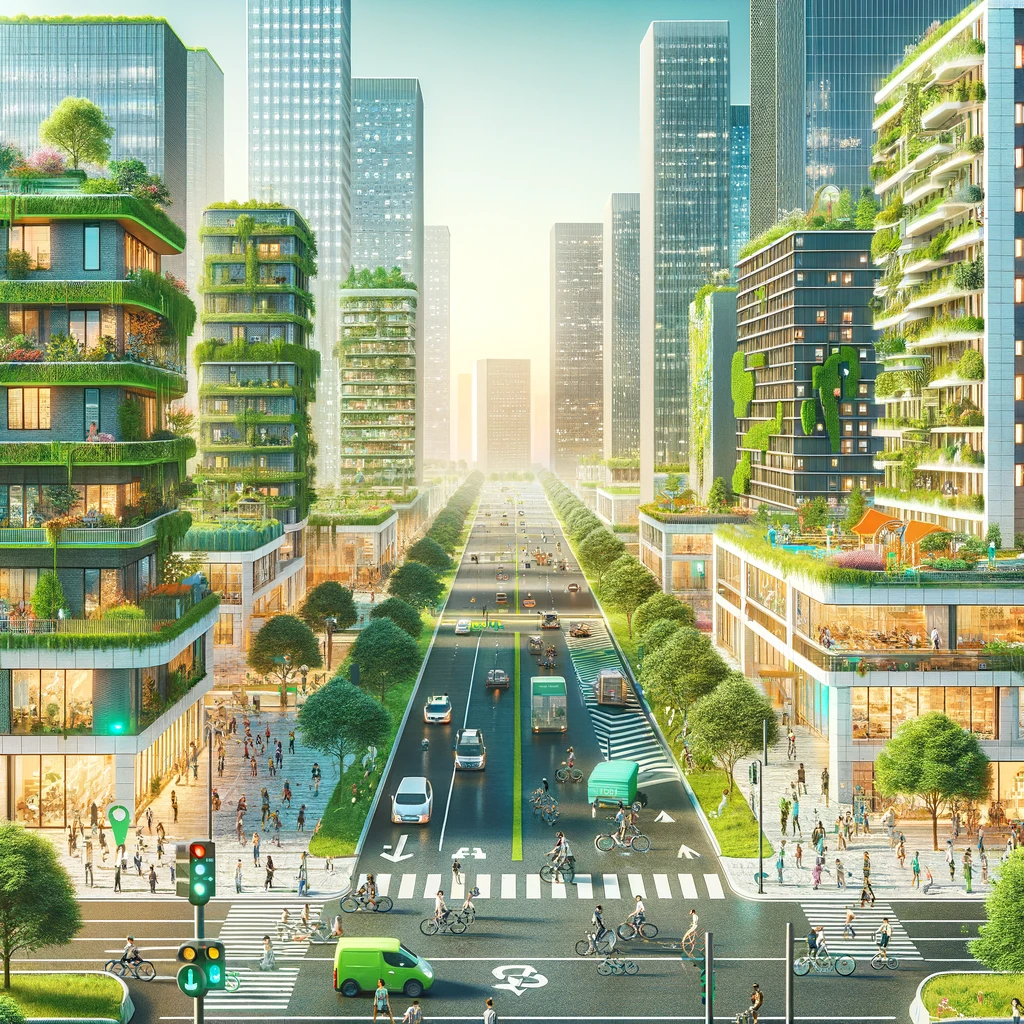In today’s rapidly urbanizing world, cities are increasingly becoming the focal points of life for a large segment of the global population. With this urban shift comes significant challenges, particularly regarding environmental sustainability. However, many cities worldwide are embracing eco-friendly living, adapting their landscapes to be greener and more sustainable. This article explores how urban centers are becoming epicenters of environmental consciousness and what this means for everyday urban dwellers.
Understanding the Urban Eco-Friendly Shift
Urban environments are traditionally seen as the antithesis of green living, with their towering skyscrapers, bustling traffic, and high energy consumption. However, this perception is changing. Cities are now at the forefront of the eco-friendly movement, driven by necessity and innovation. As the effects of climate change become more apparent, urban areas are leading the charge in adopting sustainable practices to mitigate these impacts.
Green Infrastructure
One of the most visible changes is the development of green infrastructure. This includes the creation of parks, green roofs, and vertical gardens that not only beautify the city but also play crucial roles in improving air quality and reducing urban heat islands. These green spaces provide urban residents with much-needed areas to relax and connect with nature, which is often scarce in dense cityscapes.
Sustainable Transport Systems
Transportation is a major contributor to urban pollution. In response, many cities are redesigning their transport systems to encourage more sustainable modes of travel. This includes expanding public transportation networks, adding bike lanes, and promoting electric vehicle usage through incentives and infrastructure improvements. By reducing reliance on gasoline-powered vehicles, cities are cutting down on emissions and making the air cleaner for their inhabitants.
Waste Management Innovations
Waste management is another critical area where urban environments are innovating. Cities are implementing more efficient recycling programs, promoting composting, and developing waste-to-energy facilities. These initiatives not only help reduce landfill waste but also contribute to the circular economy, where materials are reused and recycled continuously.
The Role of Technology in Urban Eco-Friendly Living
Technology plays a pivotal role in transitioning urban centers towards sustainability. Smart technologies, such as IoT (Internet of Things) sensors, are being used to monitor and manage everything from traffic flows to water usage, making cities smarter and more efficient. These technologies provide data that is crucial for planning and implementing eco-friendly policies.
Renewable Energy Adoption
Urban areas are also adopting renewable energy at an impressive rate. Solar panels are becoming a common sight on rooftops, while some districts are even integrating renewable energy sources like wind or geothermal into their power grids. This not only reduces dependence on fossil fuels but also stabilizes energy costs and reduces carbon footprints.
Community Engagement and Education
For eco-friendly initiatives to be successful in urban settings, community involvement is essential. Cities are fostering this by educating residents about the benefits of sustainable living and encouraging them to participate in local environmental programs. Community gardens, for instance, are an excellent way for urban dwellers to contribute to their food supply, reducing the need for long-distance transportation and packaging.
Policy and Governance
Effective governance is key to the successful implementation of environmental initiatives in urban areas. Local governments are increasingly passing regulations that promote sustainability, such as mandating green building practices or restricting single-use plastics. These policies not only encourage corporate responsibility but also empower citizens to lead more sustainable lives.
Challenges and Opportunities
Despite the progress, urban eco-friendly living faces several challenges. These include high costs of implementation, resistance to change, and the need for continued technological innovation. However, these challenges also present opportunities for growth, collaboration, and further innovation.
The shift towards eco-friendly living in urban environments is not just a trend but a necessity. As cities continue to grow, their role in leading environmental sustainability becomes ever more critical. By adopting green practices, urban areas can not only improve the quality of life for their residents but also set a standard for sustainable living worldwide.
In embracing these changes, urban residents find not only a deeper connection to their environment but also the opportunity to be at the forefront of a global movement towards a more sustainable and environmentally conscious world.

Innovations in Urban Agriculture
Another important aspect of eco-friendly living in urban environments is the rise of urban agriculture. This not only provides residents with fresh produce but also reduces the carbon footprint associated with transporting food from rural to urban areas. Rooftop gardens, hydroponic farms, and community plots are becoming increasingly common in cities, offering fresh food options and promoting local economies.
Benefits of Urban Agriculture
Urban agriculture has numerous benefits. It enhances biodiversity in the city, provides green spaces that contribute to the mental and physical well-being of residents, and offers educational opportunities about food and sustainability. Additionally, it can help in mitigating the urban heat island effect, as plants absorb sunlight and cool the air.
Green Building Standards
Eco-friendly living is also about the buildings in which people live and work. Green building standards, such as LEED (Leadership in Energy and Environmental Design), are being adopted by cities worldwide to ensure new developments are environmentally sustainable. These standards focus on reducing water usage, improving energy efficiency, and using sustainable materials in construction.
Impact of Green Buildings
The impact of green buildings is significant. They not only help in reducing the overall energy consumption of urban areas but also improve the indoor environmental quality, leading to healthier living and working environments. Green buildings often incorporate energy-efficient windows, insulation, and HVAC systems, which significantly reduce the energy load of the city.
Public Participation and Grassroots Movements
While technology and government policies play crucial roles, grassroots movements and public participation are equally vital. Community-driven initiatives often spearhead urban environmental movements. Activities like clean-up drives, tree planting events, and educational workshops can mobilize communities and foster a sense of ownership and responsibility towards local environments.
Examples of Successful Movements
Successful grassroots movements often serve as models for other cities. For instance, community recycling programs that turn waste into art and furniture have not only reduced waste but also fostered community spirit and creativity. These movements demonstrate the power of community engagement in driving significant environmental change.
The Role of Policy in Shaping Urban Environments
Policy plays a decisive role in shaping the environmental landscape of urban areas. Regulations that incentivize green building, penalize excessive waste, and support renewable energy projects are crucial. However, policy effectiveness often hinges on the engagement and support of the local populace, highlighting the need for policies that are both top-down and bottom-up.
Integrating Environmental Education
Integrating environmental education into school curriculums is another effective policy measure. By educating young minds about the importance of sustainability, cities can nurture future generations who are more environmentally conscious and proactive in their communities.
Looking Ahead: The Future of Urban Eco-Friendly Living
The future of urban eco-friendly living looks promising, with continuous advancements in technology, increasing public awareness, and stronger governmental support. The transition to a more sustainable urban lifestyle requires collaboration across various sectors and, importantly, the willingness of every urban resident to adapt and change.
Urban centers have the potential to be powerhouses of sustainability that drive global environmental change. By embracing eco-friendly practices, urban residents not only contribute to the health of their city but also play a crucial role in the global battle against environmental degradation.
In conclusion, the movement towards eco-friendly living in urban environments is gaining momentum. It is driven by a combination of innovative technologies, effective policies, and active community participation. As cities continue to grow, their ability to adapt and embrace sustainability will be critical in shaping a healthy, sustainable future for all.
References
- City Parks Alliance. “The Role of Urban Parks for the 21st Century.”
- Institute for Transportation and Development Policy. “Sustainable Transport Matters.”
- Smart Cities World. “How IoT Technology is Driving Urban Sustainability.”
- Environmental Protection Agency. “Innovations in Waste Management.”
